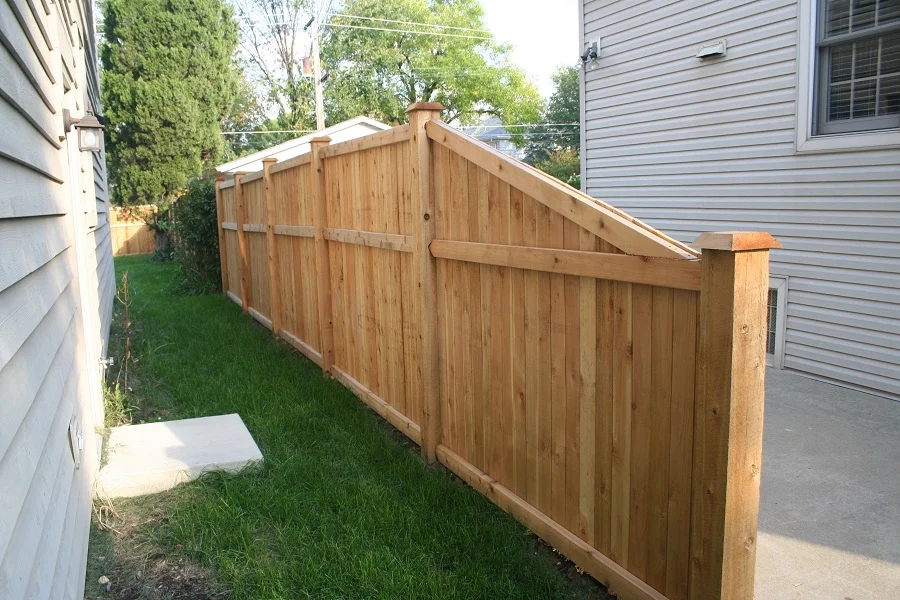Wood fences offer a timeless aesthetic that suits a wide range of homes and landscaping styles. But navigating the world of lumber can be daunting – how do you know which type is best for your needs? Selecting the right wood is essential for creating a fence that will not only look great but also stand the test of time. In this guide, we'll delve into the key considerations for choosing your ideal fence wood and highlight some of the most popular options, like cedar, pressure-treated wood, and more.
Our fencing company has installed fences across Chicagoland for nearly 100 years. We have worked with almost every wood type and can recommend options that will handle the Midwest climate, reduce maintenance, and give you the style you want.

A Quick Guide to Popular Fencing Woods
Choosing the right wood is key for a beautiful and functional fence. Consider these crucial factors: durability, pest and rot resistance, price, upkeep, and of course, looks! Below, we break down the most popular wood choices for fences, and their average lifespans with proper care:
*Prices are given for material only
Knowing what sets each wood type apart is key to making a smart fence investment. Let's take a closer look at the most popular options, including their unique traits and lifespans.
Northern White Cedar: Strong, Stylish, and Built for Midwest Weather
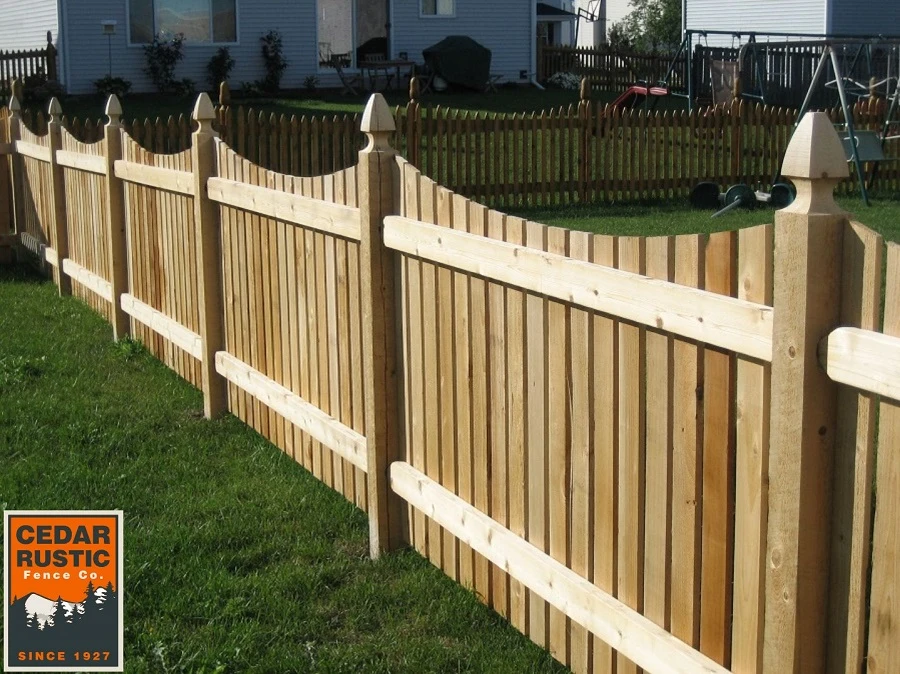
Northern White Cedar is known for its light, consistent color and its ability to handle harsh weather. While it is not the cheapest fence to install, it performs well in extreme cold and damp conditions, making it a smart choice for a cedar fence in the Chicagoland area.
Many homeowners also love its attractive appearance, boasting a warm, reddish hue that weathers gracefully over time. Cedar's natural oils help protect it from the elements, making it a relatively low-maintenance option for your fencing needs.
Pros:
- Excellent resistance to decay and insect damage
- Lighter weight makes it easier to handle during installation
- Mild, pleasant scent
- Tight, even grain for a clean, uniform look
- Holds up well against severe weather
Cons:
- Not as widely available as other cedar types
- Slightly less stable than Western Red Cedar
Maintenance and staining tips: To maintain your cedar fence's natural beauty and durability, consider applying a clear sealant or semi-transparent stain every few years. This will help protect the wood from moisture and UV damage while highlighting its unique grain and color. Cedar’s natural oils already offer good protection, so additional treatments can be simple and minimal.
Western Red Cedar: The Premier Choice
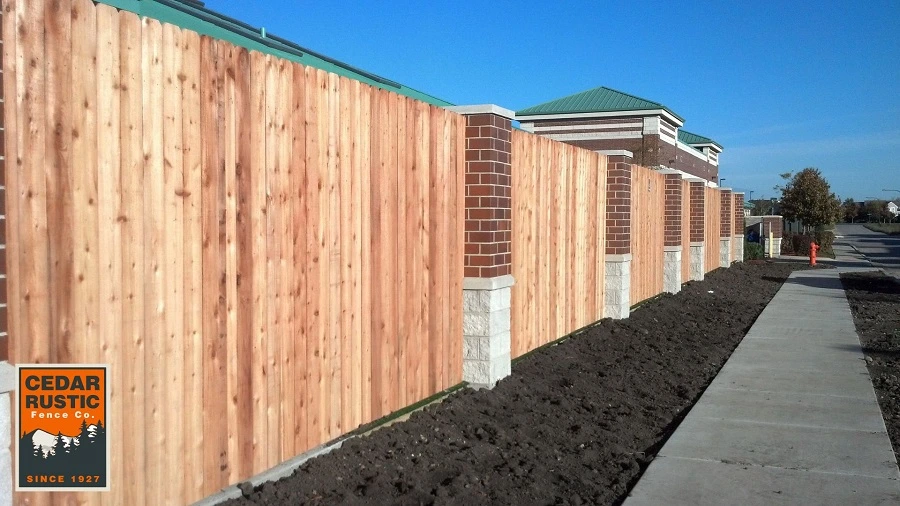
Western Red Cedar continues to be one of the top choices for fences because of its natural resistance to insects, rot, and decay. It contains natural oils and tannins that help prevent damage from moisture, pests, and fungi, without the need for chemical treatments. Its rich reddish-brown color adds warmth and beauty to any property.
Pros:
- Natural oils help repel insects and resist rot
- Holds its shape well with minimal warping or splitting
- Beautiful reddish tone that can be kept or allowed to age to a silver-gray color
- Excellent insulation properties and extended cedar lifespan
Cons:
- Premium price point compared to some alternatives
- Can be scratched or dented relatively easily due to its softness
Maintenance and staining tips: To keep your Western Red Cedar fence looking its best and lasting for years, apply a clear sealant or a semi-transparent stain every few years. This helps protect the wood from moisture and sunlight while bringing out its rich grain and natural color. Always use products made specifically for cedar to get the best results and help your fence stay in great shape over time.
Pressure-Treated Pine
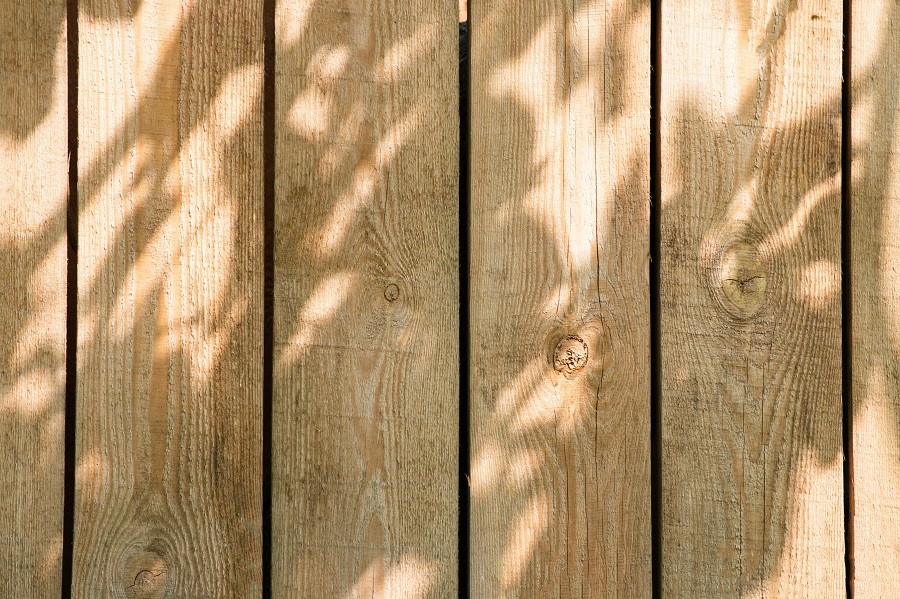
Pressure-treated pine is a popular choice due to its affordability and wide availability. This budget-friendly option undergoes a chemical treatment process that enhances its resistance to insects, rot, and decay. This treatment makes it a surprisingly durable choice for your fencing needs.
Pros:
- Budget-friendly
- Widely available
- Can be painted or stained to suit your style
Cons:
- May warp or twist over time
- Chemically treated material
Maintenance and staining tips for pressure-treated pine: Keep your pressure-treated pine fence looking its best with regular maintenance. Make sure the wood is dry before applying a stain or sealant. Want a custom color? Pressure-treated pine takes paint well – just be sure to use a product specifically designed for treated wood.
Cypress: A Hidden Gem for Durable Fencing

Often overlooked, cypress is another outstanding material for fencing, especially in humid climates. This wood's rot-resistant qualities, plus natural insect-repelling chemicals like cypretine, make it ideal for areas where moisture and pests are a concern.
Pros:
- Exceptional resistance to rot and insects
- Appealing grain pattern and color
- Durable and long-lasting
Cons:
- Can be costlier depending on your region
Maintenance and staining tips: Preserve your cypress fence with a clear sealant or semi-transparent stain every few years. This routine maintenance defends the wood against potential damage from moisture and UV light while maintaining its unique character.
Incense Cedar: Aromatic Beauty

Incense Cedar is known for its distinctive, pleasant aroma and impressive durability. This cedar variety contains natural oils that give it excellent resistance to decay and insects, similar to its cedar cousins. Its tight, straight grain and rich coloration make it both functional and visually appealing.
Pros:
- Distinctive, pleasant aroma that naturally repels insects
- Straight, tight grain offers excellent stability
- Rich reddish-brown color that ages beautifully
- Naturally resistant to decay and moisture damage
Cons:
- Less commonly available in some regions
- Can be more costly than other cedar varieties
Maintenance and staining tips: Like other cedar varieties, Incense Cedar requires minimal maintenance. Apply a clear sealer or light stain every 2-3 years to preserve its natural color, or allow it to weather naturally to a silver-gray patina. Its natural oils provide excellent protection without additional treatments.
Japanese Cedar: Eastern Elegance
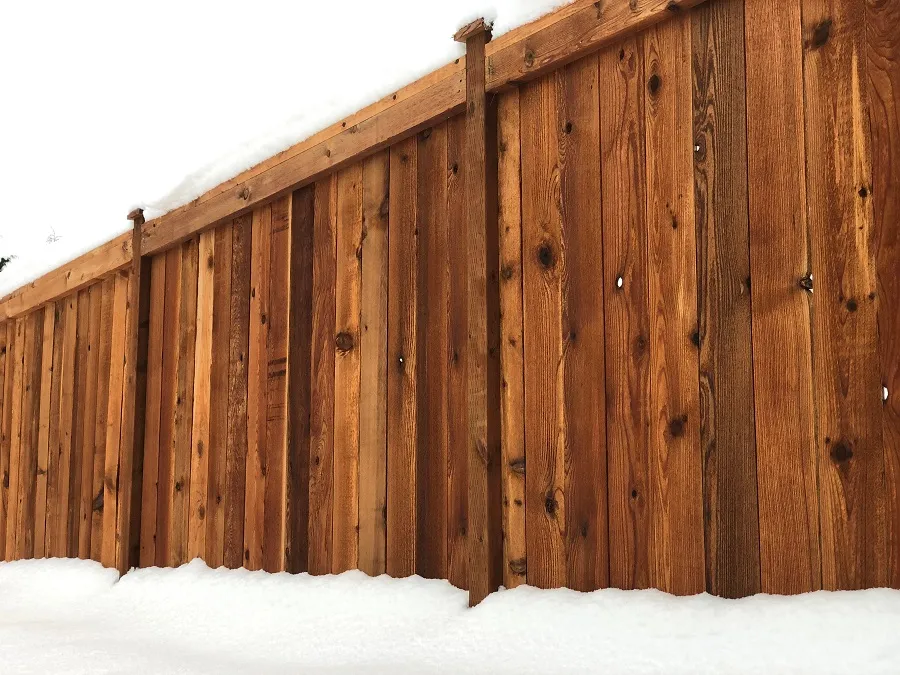
Japanese Cedar, also called Sugi, brings a distinctive look to wood fencing. Often used in Japanese gardens and landscape designs, this wood features a rich reddish-brown color and a striking grain pattern. While it does not have the same natural resistance as North American cedars, it still offers good durability when properly maintained.
Pros:
- Distinctive grain patterns that create a unique appearance
- Moderate natural resistance to decay
- Lightweight and easy to handle during installation
- Adds a subtle, refined aesthetic to garden spaces
Cons:
- Lower natural resistance compared to other cedar types
- May need more frequent maintenance
- Can be harder to find in some areas
Maintenance and staining tips: Regular care helps Japanese Cedar last longer and perform well. Apply a protective sealer or stain every one to two years to improve its resistance to moisture and insect damage. With the right upkeep, this eye-catching wood can bring lasting beauty and reliable performance to your fence.
Factors to Consider When Choosing Wood
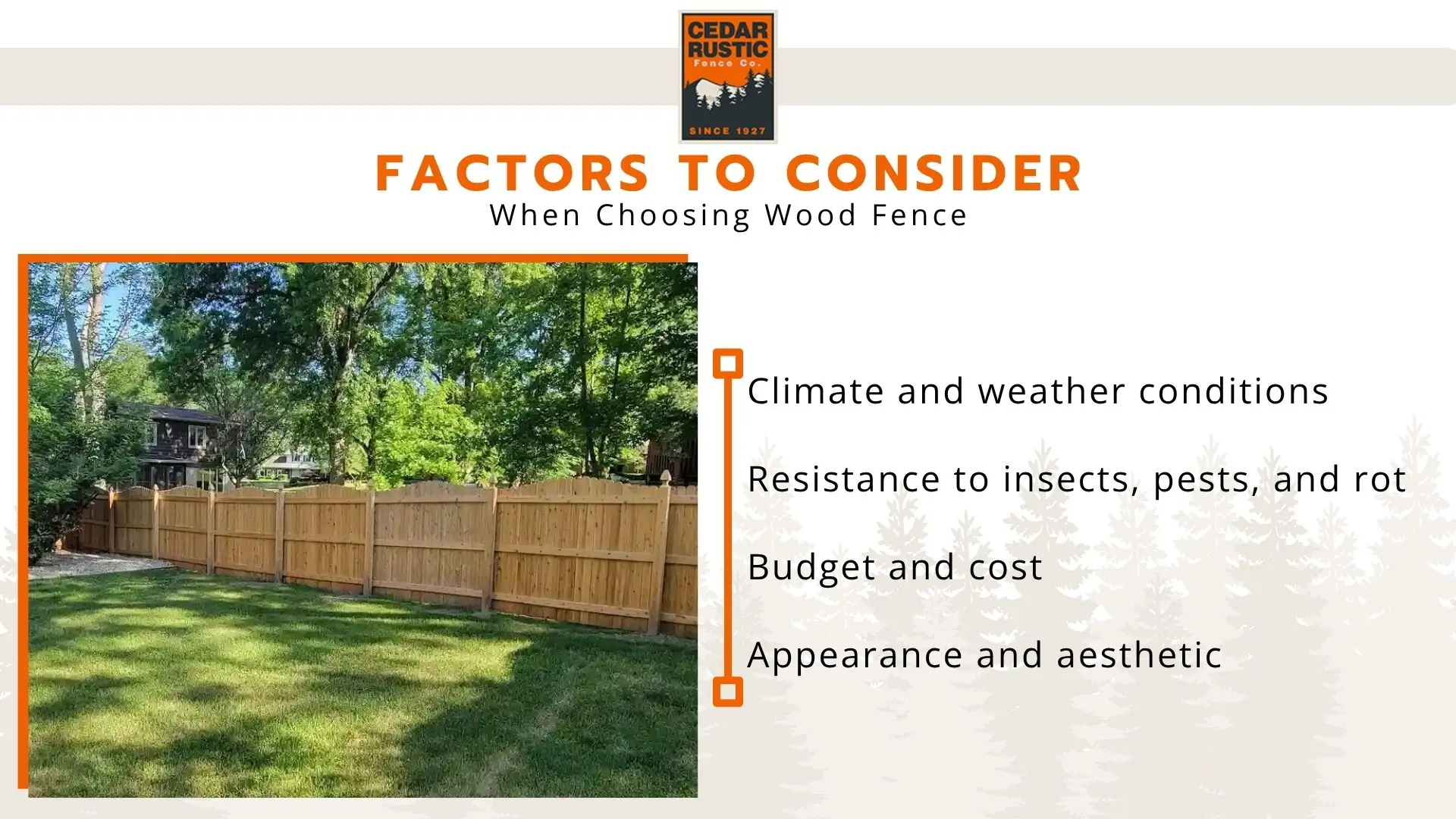
Choosing the right wood is the foundation of a fence that will elevate your property and stand the test of time. A well-maintained, high-quality wood fence not only adds privacy and security but also significantly enhances your home's curb appeal and overall value.
- Your Climate Is your area prone to heavy rain, high humidity, or harsh winters? Your local conditions will dictate the ideal wood type.
- Insect and Decay Resistance Some woods naturally resist rot and insects better than others. This is crucial for long-term durability.
- Maintenance Needs How much upkeep fits your lifestyle? Different woods require varying levels of staining and sealing.
- The Look You Love From warm red tones to rustic grays, the visual appeal of your fence matters!
Additional considerations
Professional installation:
Even the best wood needs proper installation to avoid warping, sagging, and other structural issues.
Regular inspection:
Annual checkups and proper maintenance help you catch minor issues early, preventing major repairs down the road.










